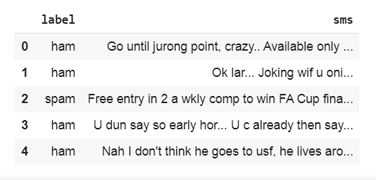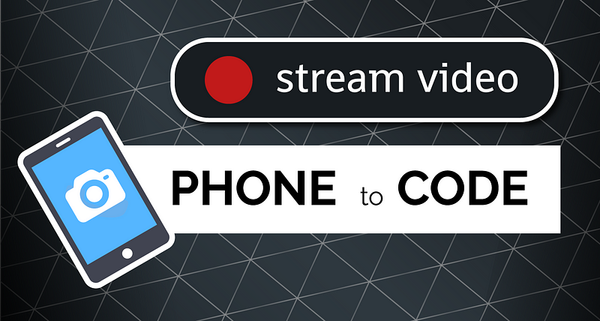How to build a simple SMS spam filter with Python
A beginner-friendly tutorial using nltk, string and pandas

Beginner-friendly tutorial using nltk, string and pandas.
What if I told you there’s no need to build a fancy neural network to classify SMS as spam or not?
Currently, the internet offers a variety of complex solutions with Random Forest, Pytorch and Tensorflow — but are these really necessary if a few “for” loops and “if” statements can achieve a very satisfying result?
In this tutorial, I will show you an easy way to predict whether a user-provided string is a spam message or not.
Step 1: We’ll load a dataset.
Step 2: We’ll pre-process the content of each SMS with nltk & string.
Step 3: We’ll determine which words are associated with spam or ham messages and count their occurrences.
Step 4: We’ll build a predict function returning a ham or spam label.
Step 5: We’ll collect user-provided input, pass it through the predict function and print the output.
Video Tutorial of How to Build a Simple SMS Spam Filter
Step 1: Loading the Dataset

First, we need a neath dataset that would hold a great number of spam and ham messages with their corresponding label.
I‘ll be using the SMS Spam Collection v. 1 dataset by Tiago A. Almeida and José María Gómez Hidalgo, which can be downloaded from here.
- If you’re using Jupyter Notebook, save the text file in the same directory as the notebook file.
We’ll load the data file using the pandas .read_csv() method and display the first 5 values to see how our dataset looks like.import pandas as pddata = pd.read_csv('SMSSpamCollection.txt', sep = '\t', header=None, names=["label", "sms"])data.head() - if you’re using Google Colab, save the text file to your Google Drive and connect it to your notebook before you proceed with the above steps.
Ensure you replace the file_url string with the location on your own drive.from google.colab import drive
import pandas as pddrive.mount(‘/content/drive’)file_url = '/content/drive/My Drive/Colab Notebooks/SMSSpamCollection.txt'data = pd.read_csv(file_url, sep = '\t', header=None, names=["label", "sms"])data.head()
In both cases, we can take a peek at our dataset and start thinking about which transformations we’ll need to perform on its’ content.

Step 2: Pre-Processing

We’ve loaded our dataset, but now we need to tailor it to our needs.
We’ll perform the following transformations on each of the messages:
- Capital Letters: we‘ll convert all capital letters to lowercase letters.
- Punctuation: we’ll remove all the punctuation characters.
- Stop Words: we’ll remove all the frequently used words such as “I, or, she, have, did, you, to”.
- Tokenizing: we’ll tokenize the SMS content, resulting in a list of words for each message.
These can be easily achieved by using the nltk and string modules.
We’ll load our stopwords and punctuation and take a look at their content.
Please note, the results of the print statement are displayed after “>>>” in the code blocks below.import string
import nltk
nltk.download('stopwords')
nltk.download('punkt')stopwords = nltk.corpus.stopwords.words('english')
punctuation = string.punctuationprint(stopwords[:5])
print(punctuation)>>> ['i', 'me', 'my', 'myself', 'we']
>>> !"#$%&'()*+,-./:;<=>?@[\]^_`{|}~
Now we can start defining our pre-processing function, resulting in a list of tokens without punctuation, stopwords or capital letters.
We’ll use lambda to apply the function and store it as an additional column named “processed” in our data frame.def pre_process(sms):
remove_punct = "".join([word.lower() for word in sms if word not
in punctuation])
tokenize = nltk.tokenize.word_tokenize(remove_punct)
remove_stopwords = [word for word in tokenize if word not in
stopwords]
return remove_stopwordsdata['processed'] = data['sms'].apply(lambda x: pre_process(x))
print(data['processed'].head())>>> 0 [go, jurong, point, crazy, available, bugis, n...
>>> 1 [ok, lar, joking, wif, u, oni]
>>> 2 [free, entry, 2, wkly, comp, win, fa, cup, fin...
>>> 3 [u, dun, say, early, hor, u, c, already, say]
>>> 4 [nah, dont, think, goes, usf, lives, around, t...
Step 3: Categorizing and Counting Tokens

After we’ve split each SMS into word tokens, we can proceed with creating two different lists:
- Word tokens associated with spam messages.
- Word tokens associated with ham messages.def categorize_words():
spam_words = []
ham_words = []for sms in data['processed'][data['label'] == 'spam']:
for word in sms:
spam_words.append(word)
for sms in data['processed'][data['label'] == 'ham']:
for word in sms:
ham_words.append(word)return spam_words, ham_wordsspam_words, ham_words = categorize_words()print(spam_words[:5])
print(ham_words[:5])>>> ['free', 'entry', '2', 'wkly', 'comp']
>>> ['go', 'jurong', 'point', 'crazy', 'available']
Step 4: Predict Function

Now we can proceed with our predict function which will take a string of characters and determine whether it’s spam or not. We’ll evaluate the number of spam/ham-associated words and the number of their occurrences within each of the categorize_words() lists.
As many words would be associated both with spam and ham — it is very important to count their instances.
Please note, we’ll be calling the function in the next cell, as we still didn’t collect a string input from the user and pre-processed it so it can be used for prediction.def predict(sms):
spam_counter = 0
ham_counter = 0for word in sms:
spam_counter += spam_words.count(word)
ham_counter += ham_words.count(word)
print('***RESULTS***')if ham_counter > spam_counter:
accuracy = round((ham_counter / (ham_counter + spam_counter) *
100))
print('messege is not spam, with {}%
certainty'.format(accuracy))elif ham_counter == spam_counter:
print('message could be spam')else:
accuracy = round((spam_counter / (ham_counter + spam_counter)
* 100))
print('message is spam, with {}% certainty'.format(accuracy))
Step 5: Collecting User Input

The last step in our project would be the easiest of them all!
We’ll need to collect a string of words from the user, pre-process it and then finally pass them as input to our predict function!user_input = input(“Please type a spam or ham message to check if
our function predicts accurately\n”)
processed_input = pre_process(user_input)predict(processed_input)

Let’s say our user input is “CRA has important information for you, call 1–800–789–7898 now!”, will our function be able to recognize it’s a spam message?processed_input = pre_process(“CRA has important information for
you, call 1–800–789–7898 now!”)
predict(processed_input)>>> 'message is spam with 60% certainty'
Indeed out function was able to recognize there’s a bigger chance that the SMS is spam rather than ham!
Now, try running the code with your own input or perhaps use a different SMS Collection dataset or a different pre-processing function.
You can potentially stem or lemmatize the tokens or even keep the uppercase letters instead of removing them.
There are endless options for text manipulation and I highly encourage you to experiment as much as you can to achieve better results!
I hope you enjoyed this tutorial and found it helpful, please contact me if you have any questions or any suggestions for improvement.
How about a video tutorial?
Are you more of a video person? no problem! checkout this tutorial on my Youtube channel!
create a simple sms spam filter with Python video tutorial
Create a GUI for your Spam Filter:
Turn your raw code into a complete Python app with Dear PyGUI. This tutorial will show you how to do it from scratch! (beginner friendly)
Please refer to the improved GUI code on Github: https://github.com/MariyaSha/SimpleSMSspamFilter_GUI
create a Python GUI app video tutorial
External Links:
Google Colab Notebook (complete code)
Jupyter Notebook (complete code)
Adjusted Code for a Command Prompt Application
Contact Me:
Youtube: https://www.youtube.com/pythonsimplified
LinkedIn: www.linkedin.com/in/mariyasha888
Github: www.github.com/MariyaSha
Instagram: https://instagram.com/mariyasha888





